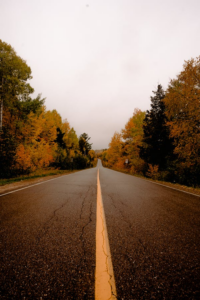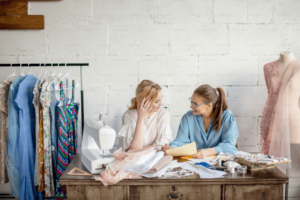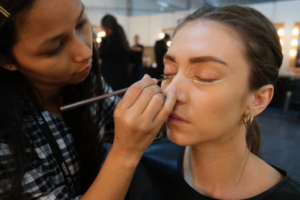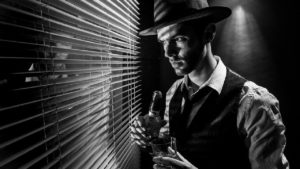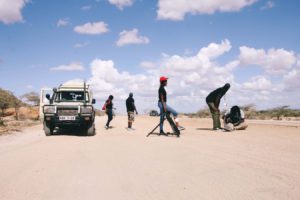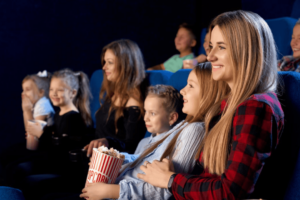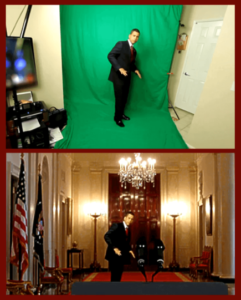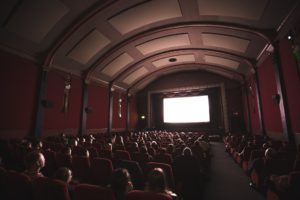B Roll (sometimes written as B-Roll or Broll) refers to secondary footage that visually supports the primary footage in a film or video project. It’s usually interwoven with the main footage for a variety of purposes, including enhancing the story, adding dramatic tension, and elaborating a point.
What Is the Difference Between A Roll and B Roll?
Basically, A Roll is the primary footage you shoot in any film or video project. In a situation where you have a multi-camera setup, you’ll use the A Camera to shoot A Roll footage. A Roll is also often meant to designate the most important footage and the best shot produced in a project. B Roll, on the other hand, denotes any footage you shoot with the B Camera. It’s generally regarded as supplemental footage to the A Roll produced with the A Camera. You can shoot B Roll at the same time as A Roll to get a different angle or additional coverage or separately at a different time and location. B Roll is often considered footage of lesser importance, but this isn’t always the case. A story with only A roll footage may seem dull or off-balance, which is why it’s important to shoot B Roll. B Roll footage can come in many different forms, including:
- Undirected footage of the subject or other people
- Atmospheric shots of the location or inanimate objects
- Establishing shots, which showcase the location of a scene or story
- Pick-up shots, which are brief segments of video used to supplement content
- Dramatic reenactments
- Stock footage, which is general video content used to supplement content or as establishing or atmospheric shots
- Archival imagery, which is video or photograph content pulled from a library on a certain topic, subject, or location
What You Can Do With B Roll
You can implement B Roll footage in many different ways to make your film or video more appealing and compelling, such as:
- Setting the tone for your film or video
- Breaking up monotony
- Establishing characters or scenes
- Providing flexibility during the editing process
- Masking gaps and errors
How to Use A Roll and B Roll
To gain a better understanding of A Roll and B Roll, learn how film and video professionals use them in different types of projects. The following are a few examples.
Interview Shoots
A Roll and B Roll can be easily distinguished in an interview-style shoot. Classic news reporting comes to mind when you see the interview subject talking about an issue, which is A Roll footage. At certain points during the shoot, you’ll see a cut and then additional footage that corresponds with the same audio. This is the B Roll footage. B Roll can also be applied to an interview shoot that uses a multi-camera setup. In this situation, the A Camera is directed at the interview subject, so it’ll record the A Roll. The B Camera may be set in a fixed position to get a different angle or moved around for a variety of angles. If a third camera is in use, it may be referred to as the C Camera.
Narrative Shoots
In a narrative production, A Roll usually comprises one or more people providing a narrative or discussing a topic. In a voice-over narrative, the A Camera usually follows the subject or subjects being discussed. While it can clearly communicate the story from start to finish, A Roll by itself may not be sufficient to keep the audience engaged. The purpose of B Roll in a narrative production is to build a world around the A Roll, making the story more interesting. For instance, if the A Roll shoots characters who are meant to be in a specific city, the B Roll may show specific buildings, nearby amenities, or the natural surroundings. In a documentary, B Roll footage can be a mix of scene-setting and narration, one or more subjects in action, or thematic close-ups of people, objects, or places.
Live Shoots
In a regional stage production or live studio television show, the A Camera is often set up to capture the widest shot possible, which ensures maximum coverage. The B Camera, on the other hand, can be used to take close-up shots.
Tips for Shooting B Roll
When you’re thinking of what you want to shoot and putting together your pre-production schedule, it’s essential to set aside time for creating ample B Roll footage. This will ensure you’ll have appropriate footage to visually relate the people, places, or objects that build the world of your story. Below are a number of helpful tips for creating great B Roll footage.
- Plan ahead: Think about your main footage and build around it. For instance, if you’re interviewing a subject in a home, you should consider shooting entrance and exit footage, ambient footage, and footage of the space where the interview takes place. For creative stories, make a list of must-have and nice-to-have B Roll shots for each scene or elements like credit scenes or establishing transition shots.
- Scout locations: You may only have a few minutes to shoot good B Roll footage, so it’s a good idea to scout the location ahead of time. By doing so, you can take your time to plan how you’ll capture the B Roll you want. Additionally, you’ll have a better idea of what equipment you need. This is especially important if you’re filming in a dark or tight place.
- Get a variety of angles: Whether you’re shooting your subject or something else, you should try to get a variety of shots from different angles. The extra shots will come in handy when you need cutaways.
- Shoot more than enough: When you’re shooting your film or video, make a point to create a collection of images that may not necessarily fit into your scheduled shot list. Every video or film needs breathing room, so it’s important to have some extra shots at your disposal when you need to evoke a space, transition between locations, or show the passage of time in the story.
Experimenting With Camera Angles
As mentioned earlier, you need to shoot a subject or scene from different angles to create good B Roll footage. Below are a few angles you can play around with.
- Wide-angle: Usually an establishing or environmental shot, a wide-angle shot will show your subject and the surrounding environment. It helps put the viewer firmly in a scene.
- Medium: This type of shot shows a portrait of your subject from the waist up. It’s a great option when your subject is in action or speaking because it allows the viewer to see other elements in the scene without losing focus on the subject.
- Close-up: The close-up is a shot taken at close range to show the subject in greater detail. It reveals character by offering intimacy and highlighting nuances that the viewer may miss. Such a shot is usually used to capture the face of a subject.
- Ken Burns Effect: Invented by renowned documentarian Ken Burns, the Ken Burns Effect brings a still image to life by zooming, panning, and tilting the camera. You can use this technique to add a dramatic effect to B Roll footage of otherwise dull-looking archival material such as photographs and documents.
Examples of B Roll Footage
Documentaries: Anytime the footage from the video below is not from an interview or if it is in the past, that would be B Roll video.
News Footage:
Movies:
Opening scene of Field of Dreams:
Behind the Scenes of Mad Max: Fury Road:
Television:
Reality TV:
Wedding Videos:
Knowing how to properly shoot and use B Roll footage can take your films or videos to a whole new level. However, implementing B Roll is only one of the many skill sets you need to become a great filmmaker or video creator. If you want to undergo comprehensive filmmaking training, consider enrolling in Nashville Film Institute. Contact us today to find out more about our Cinema Production Program.


